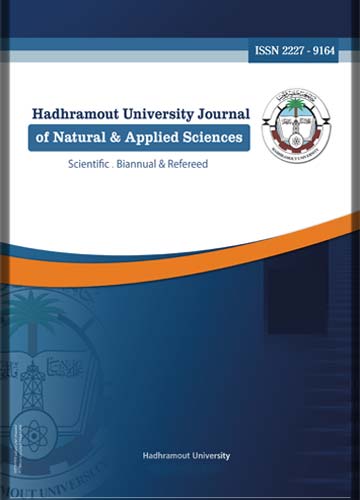Removal of Lead (II) from Polluted Seawater in Mukalla Coast, Hadhramout Using Biotechnology of Dried Biomass of Macroalgae, Gracilaria sp and Sargassum sp
Keywords:
Bio-sorption, pb (II), Removal, Macroalgae, Ecofriendly Technique, Functional GroupsAbstract
This study aimed to remove lead ions (Pb²+
) from seawater mixed with wastewater that
discharged to Mukalla coast. Water samples were collected from points near the sewage discharging
sampling station. Macroalgae samples, Gracilaria sp and Sargassum sp were used for bio-sorption of
Pb²+
from seawater in the study area. Besides, this study aimed to assess the removal efficiency of leadheavy metal ions (Pb²+
) from polluted seawaters in Mukalla coast by Macroalgae biomass. The effect of
pH values (4.5 –7.5 ± 0.5) and different adsorbent dosages were used on the adsorption process through
Winter and Summer seasons. The removal percentage of Pb²+ was applied to describe the bio-sorption
capacity in polluted water. This method is an eco-friendly technology for reducing heavy metals from
polluted seawaters as an effect of functional groups of macro-algae cell walls. The results of lead bio
sorption percentages were found to vary from 80.00 % to 90.00% in pH value of 4.5 and from 76.82% to
89.4% in pH value of 7.5 at 20B sampling station through Winter and Summer seasons, respectively. The
FT-IR analysis indicated that possible functional groups involved in metal adsorption by macro-algae
were C–O, O–H and N–H stretching. FT-IR technique has been proved for detecting probable binding
sites of Pb²+
induced by the presence of active groups including carboxyl and hydroxyl groups in both
Gracilaria sp and Sargassum sp algae biomass that are of the components of the structure of algae cell
walls.




